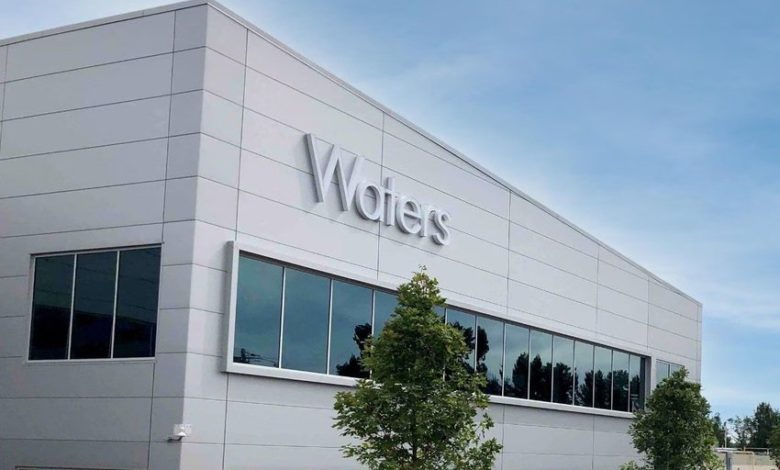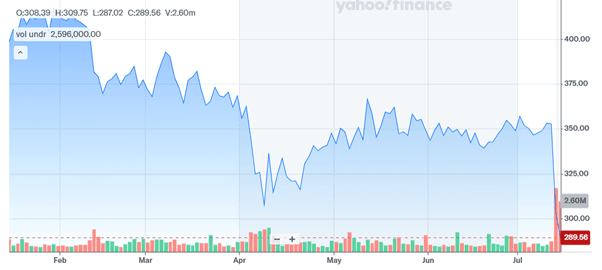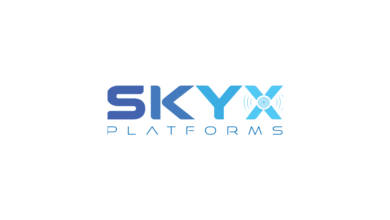Waters Corp’s $17.5 Billion Bet: Why the Becton Dickinson Acquisition Could Transform Its Future

In a move that could reshape the competitive dynamics of the life sciences and diagnostics market, Waters Corporation (NYSE:WAT) has announced the acquisition of Becton Dickinson’s (NYSE:BDX) biosciences and diagnostic-solutions unit in a $17.5 billion deal. This strategic combination brings together Waters’ established strengths in lab instrumentation and software with BD’s comprehensive bioscience capabilities and diagnostic product lines. The acquisition was structured such that BD shareholders will receive about 39% of Waters shares and $4 billion in cash, while Waters assumes an additional $4 billion of BD’s debt. The combined company will be led by Waters CEO Udit Batra, with Waters CFO Amol Chaubal continuing in his role and up to two BD designees joining the board. The deal, expected to close by Q1 2026, has drawn both excitement and skepticism in investor circles, but management is confident the move doubles Waters’ total addressable market to roughly $40 billion and paves the way for more predictable, recurring revenue. Here’s a deeper look at what Waters hopes to gain from this bold acquisition.
Expanding Addressable Market & Revenue Recurrence
One of the most prominent benefits Waters Corp. stands to gain from this acquisition is the expansion of its total addressable market. Prior to the deal, Waters operated in a $20 billion market primarily focused on analytical instruments and related software used in pharma QA/QC, environmental testing, and industrial applications. With the addition of BD’s biosciences and diagnostics business, this figure is expected to double to approximately $40 billion, immediately elevating Waters into the top tier of life sciences players and placing it closer in scale to behemoths like Thermo Fisher and Danaher. The diagnostic segment that BD brings includes tools widely used in clinical workflows, particularly in immune monitoring, infectious disease testing, and oncology, which are fast-growing areas of healthcare. Importantly, the combined company will derive over 70% of its revenue from annually recurring sources such as reagents, consumables, and service contracts. This is a significant shift for Waters, which had traditionally been more reliant on instrument sales that were more cyclical in nature. The enhanced recurrence adds a layer of predictability to its financial profile, making it more resilient in downturns and potentially improving its valuation multiple. As Waters continues to scale and offer integrated solutions across the drug development and diagnostic lifecycle, the breadth of its customer relationships and the stickiness of its revenue base could improve materially over time, providing greater stability and the ability to navigate macroeconomic volatility more effectively.
Synergies In Bioanalytical & Bioprocessing Workflows
Another strategic rationale for this acquisition is the enhanced ability of Waters to deliver end-to-end bioanalytical and bioprocessing solutions. BD’s diagnostics unit offers a strong portfolio of flow cytometry, immunoassay, and clinical testing tools that complement Waters’ expertise in chromatography, mass spectrometry, and data management. The integration of these two platforms allows Waters to offer seamless workflows in biologics characterization, cell therapy development, and advanced diagnostics. For example, Waters has already made strides in expanding its bioanalytical footprint through the integration of Wyatt’s light-scattering technology with its Empower software, enabling biopharma customers to characterize large molecules in quality control settings. With BD’s biosciences assets—particularly its high-parameter flow cytometers and reagent libraries—Waters now gains access to upstream discovery tools and cell analysis capabilities. This positions the company to be more deeply embedded in the biologics development pipeline, from early-stage R&D through manufacturing and final QC testing. Moreover, the growth in areas like GLP-1 peptide manufacturing, where Waters already has a strong presence via its PATROL UPLC system and Alliance iS HPLC platforms, could now be complemented by BD’s diagnostic tools used in biomarker detection and companion diagnostics. The synergies are not just technological; they also extend to sales channels, as the combined entity will have greater leverage to cross-sell products across pharma, academic, and hospital laboratory customers. Over time, this could lead to better customer retention, increased average contract values, and more integrated long-term service relationships.
Operating Margin Expansion Through Cost Rationalization
From a financial perspective, Waters is eyeing a meaningful boost to its operating margins through the absorption and streamlining of BD’s biosciences and diagnostics unit. Currently, Waters operates with an adjusted operating margin of around 25.5%, and the company projects that the combined entity will begin at a 27% adjusted operating margin with the potential to expand by another 500 basis points by 2030. This forecasted expansion is underpinned by the expectation of approximately $200 million in cost synergies within three years and $290 million in revenue synergies within five years. Much of the cost optimization is expected to come from consolidating manufacturing sites, harmonizing ERP systems, eliminating overlapping back-office functions, and integrating sales and distribution networks globally. BD’s diagnostic business also brings in large reagent and consumable volumes that could create greater procurement leverage and lower unit costs when consolidated under Waters' more streamlined operational structure. Waters has also proven its ability to execute margin-improving initiatives over the past few years, particularly during pandemic-era disruptions, supply chain pressures, and inflation. The company’s disciplined cost control, pricing discipline (with over 200 bps of like-for-like pricing gains in Q1 2025), and digital transformations through e-commerce and service plan attachment give it a playbook to manage the complexities of integration. However, analysts remain cautious, noting that Waters does not have a history of executing large-scale M&A deals of this magnitude, which means successful realization of these synergies will be heavily scrutinized by investors and may require more time and resources than anticipated.
Strengthening Competitive Position In A Consolidating Industry
This acquisition also strategically positions Waters to better compete in a consolidating life sciences tools landscape, where scale, integration, and recurring revenue are becoming increasingly vital. With major players like Thermo Fisher Scientific and Danaher continuously expanding through acquisitions, Waters has faced growing pressure to scale up in order to maintain relevance in high-growth areas like bioanalytics, diagnostics, and regulated testing. The addition of BD’s diagnostic unit helps address this pressure by giving Waters a broader portfolio that is more competitive in large customer RFPs and government contracts. It also strengthens Waters' exposure to clinical diagnostics—a space where mass spectrometry and chromatography are increasingly finding applications, particularly in personalized medicine, cancer diagnostics, and public health surveillance (e.g., PFAS testing). Waters’ instruments like the Xevo TQ Absolute are already well-positioned in regulated environments such as environmental testing and food safety, and the deal can enhance its presence in clinical testing labs by integrating BD’s instrumentation and consumables. Moreover, this combination supports Waters’ long-term ambition of transforming Empower, its flagship software, into a SaaS-based ecosystem that can manage diverse analytical data across instruments and applications. By embedding BD’s diagnostics data workflows into Empower, Waters can offer an integrated informatics platform that streamlines lab operations, reduces regulatory risk, and boosts productivity. This ecosystem approach could provide competitive differentiation in a market increasingly shaped by automation, data integrity, and AI-driven analytics.
Final Thoughts

Source: Yahoo Finance
The expected dilution as a result of the $17.5 billion acquisition payout has resulted in a drop in the stock price of Waters Corp as shown in the above chart but we believe that this move could strengthen its long-term position in a competitive and evolving life sciences landscape. The potential upsides are significant: a doubled addressable market, greater exposure to high-growth diagnostic segments, stronger pricing power, and improved operating leverage. Integration of complementary technologies in chromatography, diagnostics, and bioanalytics could also deepen customer relationships and unlock new applications. However, the investor skepticism, reflected in Waters’ share price reaction post-announcement, indicates the market will demand clear evidence of delivery. Ultimately, while the deal provides strategic rationale and promising levers for value creation, the long-term impact on Waters’ trajectory will depend on flawless execution, market dynamics, and the ability to maintain innovation leadership during a complex integration phase.




